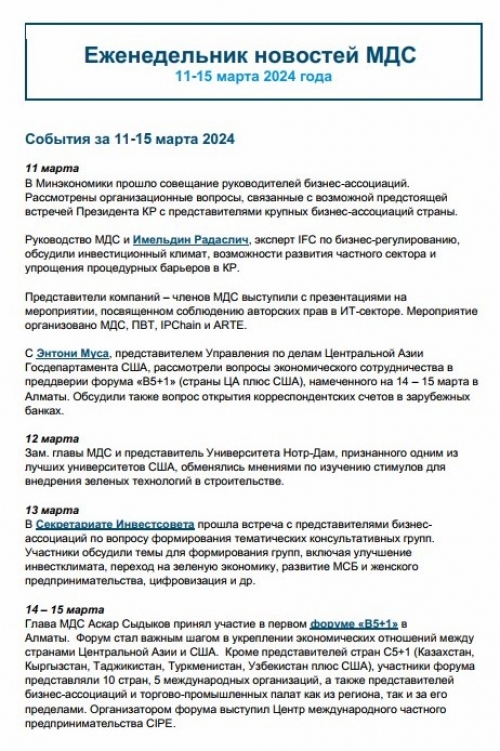News /
IBC Members' news /
IMF presents its Regional Economic Outlook for Central Asia and Caucasus
A Survey by the IMF staff usually is published twice a year. It presents IMF staff economists' analyses of global economic developments during the near and medium term. Chapters give an overview as well as more detailed analysis of the world economy; consider issues affecting industrial countries, developing countries, and economies in transition to market; and address topics of pressing current interest.
Global growth is projected to slow to 3.1 percent in 2016 before recovering to 3.4 percent in 2017. The forecast, revised down by 0.1 percentage point for 2016 and 2017 relative to April, reflects a more subdued outlook for advanced economies following the June U.K. vote in favor of leaving the European Union (Brexit) and weaker-than-expected growth in the United States. These developments have put further downward pressure on global interest rates, as monetary policy is now expected to remain accommodative for longer.
Longer-term prospects for advanced economies remain muted, given demographic headwinds and weak productivity growth, although growth in emerging market and developing economies is expected to strengthen further over the medium term.
This optimism is based on a number of important favorable assumptions such as gradual normalization of conditions in economies currently under stress, a general pickup in growth in commodity exporters, a continued rebalancing of China’s economy, and resilient growth in other emerging market and developing countries.
Against this backdrop, policy priorities differ across individual economies depending on the specific objectives of improving growth momentum, combating deflationary pressures, or building resilience. Globally, urgent action relying on all policy levers is needed to head off further growth disappointments, combat damaging perceptions that policies are ineffective, and that rewards accrue only to those at the higher end of the income distribution. Among advanced economies, policies should aim to support near-term demand through accommodative monetary policy and supportive fiscal stance—calibrated to the amount of fiscal space available—while implementing measures to lift potential growth and, in some cases, steps to strengthen bank and corporate balance sheets
.
In emerging market and developing economies, the broad policy objective should be to maintain income convergence by reducing distortions in product, labor, and capital markets, addressing financial vulnerabilities, and investing in education and health care. Low-income developing economies should focus on rebuilding policy buffers, while preserving critical capital expenditures and social outlays.
Implementation of structural reforms would pave the way for economic diversification and higher productivity. Continued multilateral effort is required to address the ongoing backlash against global trade, establish effective banking resolution frameworks, and build a stronger global safety net.























